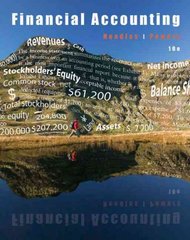PROBLEMS 1. Acquiring Corporation ("P") has 500,000 shares of voting common stock outstanding (valueS10 per share) and 500,000 of accumulated earnings and profits. Target Corporation ("T") has assets with an aggregate adjusted basis of $300,000 and an aggregate fair market value of $500,000, and $100,000 of accumulated earnings and profits. Except as otherwise indicated below, assume that has no liabilities. T's ten equal shareholders each owns 100 shares of T voting common stock with an adjusted basis of $20,000 and a fair market value of $50,000. Discuss the tax consequences to P, T and T's shareholders of each of the following alternative transactions: (a) T merges into P in a qualified Type A reorganization. Each T shareholder receives 4,000 shares of P voting common stock (valueS40,000) and P nonvoting preferred stock (not "nonqualified preferred stock") worth $10,000. What if the P nonvoting preferred were nonqualified preferred stock? (b) Same as (a), above, but instead of the preferred stock each T shareholder receives 20-year market rate interest bearing P notes with a principal amount and fair market value of $10,000. (c) Same as (b), above, except that two of the shareholders receive all the notes (with a principal amount and fair market value of $100,000), and the remaining eight shareholders each receives P voting common stock worth $50,000. 447 (d) Same as (b), above, except that T had $50,000 of accumulated earnings and profits. (e) Assume for the remainder of the problem that T has assets with an aggregate fair market value of $600,000, an aggregate adjusted basis of $300,000, and a $100,000 liability. P acquires all I's assets in a qualified Type C reorganization in exchange for P voting stock worth $500,000 and P's assumption of T's $100,000 liability. T immediately distributes the stock to its shareholders in complete liquidation (1) Same as (e), above, except P transfers $500,000 of P voting stock and S100.000 cash to T, which uses the cash to pay off its liability and then distributes the stock to its shareholders in complete liquidation, (9) Same as (e), above, except P transfers to T $500,000 of P voting stock and investment securities with a basis of $40,000 and a fair market value of $100,000. T sells the securities for $100.000, using the proceeds to pay off its liability, and then liquidates and distributes the stock to its shareholders. (h) Samcas (e), above, except P transfers $600,000 of its voting stock to Tin exchange for all of T's assets and does not assume T's liability. T then sells $100,000 of P voting stock and uses the proceeds to pay off the liability. T then distributes the remaining Pstock to its shareholders in complete liquidation. (1) Same as (h), above, except T transfers $100,000 of P voting stock directly to its creditor in payment of the liability and then distributes the remaining P stock to its shareholders in complete liquidation. PROBLEMS 1. Acquiring Corporation ("P") has 500,000 shares of voting common stock outstanding (valueS10 per share) and 500,000 of accumulated earnings and profits. Target Corporation ("T") has assets with an aggregate adjusted basis of $300,000 and an aggregate fair market value of $500,000, and $100,000 of accumulated earnings and profits. Except as otherwise indicated below, assume that has no liabilities. T's ten equal shareholders each owns 100 shares of T voting common stock with an adjusted basis of $20,000 and a fair market value of $50,000. Discuss the tax consequences to P, T and T's shareholders of each of the following alternative transactions: (a) T merges into P in a qualified Type A reorganization. Each T shareholder receives 4,000 shares of P voting common stock (valueS40,000) and P nonvoting preferred stock (not "nonqualified preferred stock") worth $10,000. What if the P nonvoting preferred were nonqualified preferred stock? (b) Same as (a), above, but instead of the preferred stock each T shareholder receives 20-year market rate interest bearing P notes with a principal amount and fair market value of $10,000. (c) Same as (b), above, except that two of the shareholders receive all the notes (with a principal amount and fair market value of $100,000), and the remaining eight shareholders each receives P voting common stock worth $50,000. 447 (d) Same as (b), above, except that T had $50,000 of accumulated earnings and profits. (e) Assume for the remainder of the problem that T has assets with an aggregate fair market value of $600,000, an aggregate adjusted basis of $300,000, and a $100,000 liability. P acquires all I's assets in a qualified Type C reorganization in exchange for P voting stock worth $500,000 and P's assumption of T's $100,000 liability. T immediately distributes the stock to its shareholders in complete liquidation (1) Same as (e), above, except P transfers $500,000 of P voting stock and S100.000 cash to T, which uses the cash to pay off its liability and then distributes the stock to its shareholders in complete liquidation, (9) Same as (e), above, except P transfers to T $500,000 of P voting stock and investment securities with a basis of $40,000 and a fair market value of $100,000. T sells the securities for $100.000, using the proceeds to pay off its liability, and then liquidates and distributes the stock to its shareholders. (h) Samcas (e), above, except P transfers $600,000 of its voting stock to Tin exchange for all of T's assets and does not assume T's liability. T then sells $100,000 of P voting stock and uses the proceeds to pay off the liability. T then distributes the remaining Pstock to its shareholders in complete liquidation. (1) Same as (h), above, except T transfers $100,000 of P voting stock directly to its creditor in payment of the liability and then distributes the remaining P stock to its shareholders in complete liquidation








